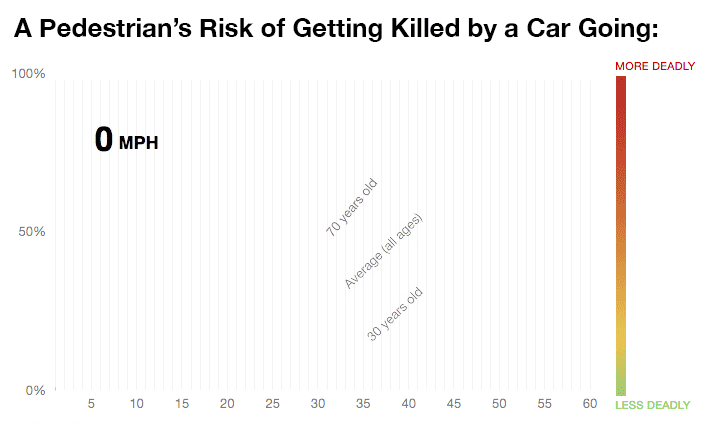Speed kills, especially on city streets teeming with pedestrians and cyclists.
2Pass Defensive Driving has produced a graph that conveys how just a few miles per hour can spell the difference between life and death when a person is struck by a motorist. Gordon Fox used data from the AAA Safety Foundation to chart the plummeting likelihood of survival as motorist speed increases.
The average pedestrian struck by a driver traveling at 20 mph has a 93 percent chance of surviving. For a 70-year-old, the chances are somewhat lower but still a robust 87 percent.
As Groeger puts it:
Once cars reach a certain speed (just above 20 mph), they rapidly become more deadly. A person is about 70 percent more likely to be killed if they’re struck by a vehicle traveling at 30 mph versus 25 mph.
In collisions at 30 miles per hour, about one in five pedestrians will not survive. For older pedestrians, the odds are significantly worse:
The risk of death continues to rise dramatically as speeds exceed 30 mph. At 40 mph, most older pedestrians will not survive:
